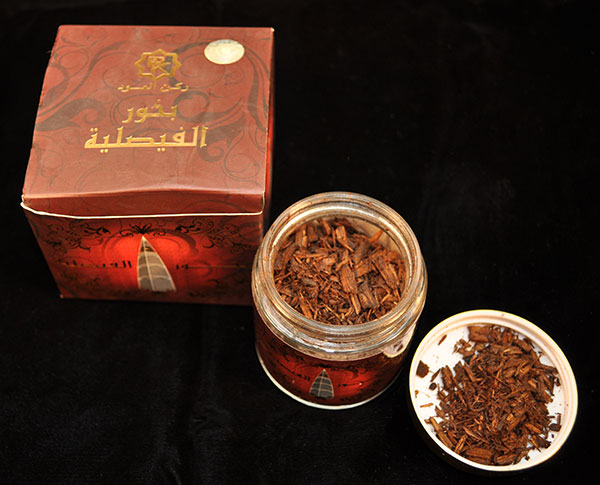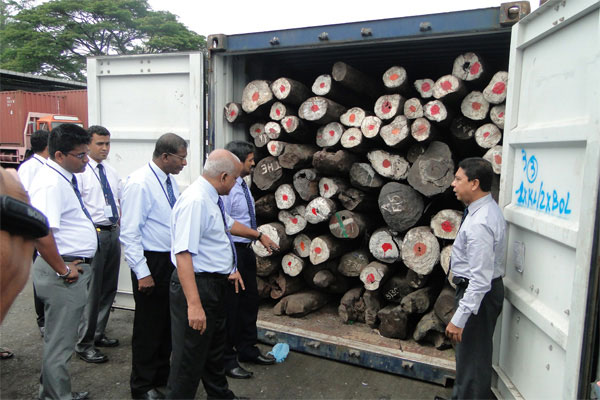U.S. Fish and Wildlife Forensic Lab
There's only one place in the world that is a dedicated crime lab for wildlife. The U.S. Fish and Wildlife Forensic Lab, located in Ashland, Oregon, was opened in 1989 to help put a stop to illegal exports and imports of products made from endangered wildlife as well as protected natural resources.
Wildlife trade is the 4th largest illegal industry worldwide, behind narcotics, counterfeiting, and human trafficking. When items suspected of being made from protected species are seized at airports, borders, and shipping docks and cannot be positively identified, the inspectors send them to the USFWS Forensic Lab.
The lab serves 180 countries who signed the United Nation's CITES (Convention on International Trade in Endangered Species) Treaty, all 50 states in the U.S., 200+ special agents, and 120+ inspectors. It has also assisted the International Criminal Police Organization (INTERPOL) with forensic analysis.
 U.S. Fish and Wildlife Forensic LabCategory
U.S. Fish and Wildlife Forensic LabCategoryPackaged incense made from rare and protected woods
 U.S. Fish and Wildlife Forensic LabCategory
U.S. Fish and Wildlife Forensic LabCategory Rosewood logs from Madagascar seized by authorities in Sri Lanka (image courtesy of mongabay.com)
The seized items can be such things as packaged incense made from rare and protected woods, food or medicinal products ground up or disguised in shape, and clothing, jewelry, accessories, and furnishings made from endangered animals' tusks, horns, and skins.
Of major concern is poaching of the critically endangered rhinoceros whose single horn - often valued at $100,000 - has perceived medicinal benefits in some cultures. The rhino is on the verge of extinction. Ivory is often traded illegally for jewelry and ornamentation. Elephants are the victims here - poached primarily for their tusks - which are in big demand in some parts of the world.
With just 15 scientists on staff, USFWS Forensic Lab identifies the suspected animal or plant species and its origin, often from unrecognizable evidence that requires special analytical instrumentation for verification. The investigators use all the typical forensic methods including morphology, DNA analysis, and chemical analysis to verify what the animal or plant is, how it was killed, and to determine its origin.
Often it's the chemical composition that provides the positive identification needed. For the past three years, the lab has used the JEOL AccuTOF-DART, a mass spectrometer equipped with a JEOL-patented ion source (DART) that makes it possible to analyze a sample without altering it or having to go through any special preparation techniques. The DART can almost instantly detect the chemical fingerprint of contraband like bear bile, producing a mass spectrum showing ursodeoxycholic acid (UDCA), the active ingredient.
The illegal smuggling of bear bile or the gall bladders from bears is just one example of current trends in wildlife crime. Collected to satisfy cultural traditions, bear bile can be found in the form of various powders, liquids, or tablets, or sometimes disguised in a myriad of products. (
See related article.)
A huge shipment of precious rosewood logs from Madagascar was seized by authorities in Sri Lanka last year, evidence of the industrial-scale smuggling that is robbing the rainforest of its habitat, impacting wildlife in its wake, and benefiting a dangerous criminal element in society.
With the help of the AccuTOF-DART, the chemist, Ed Espinoza, was able to accurately identify the wood and also its origin. In fact, the first successful test for the AccuTOF-DART was when it accurately identified the presence of the endangered agarwood in incense. Then they successfully applied the technique to other types of wood that can be difficult to identify.
"Rosewoods are found all over the earth. Some are highly protected and no trade is allowed whatsoever. Some need a permit system to bring into country, and some are freely available. From our point of view it's a really complex set of questions. We're pretty happy that we can in fact determine the different species and if they are protected or not protected."
He adds that, "The biggest value in illegal shipments that I've seen in my career have all been wood." One shipment of agarwood was valued at $52 million. Espinoza's recent casework also includes guitar fingerboards made of hardwood (which could be rare rosewood), violin bows made from protected wood from Brazil, and antique pieces that are thought to be of a type of endangered mahogany.
"We have tons of cases these days. We have to determine if the wood was imported legally or not. People try to import protected wood but label it as non-protected. Most customs officials rely on the paperwork unless they have probable cause to say it needs to be examined and they send a sample." He adds that the cases have come from all over the globe - Mexico, Sri Lanka, and England. Research online revealed something that shocked Espinoza, who knew that the wood could be bought for a price. "The minimum amount you can buy starts at five million dollars, and they offer to deliver that amount every month."
Specially-developed Software for Speedy Answers
What helps make the AccuTOF-DART an important part of the lab is not only its ability to analyze and detect the chemical composition of the suspicious item in real time, but its ability to differentiate the chemical composition of closely related species. JEOL's mass spectrometry manager, Dr. Robert (Chip) Cody developed special statistical software that allows Espinoza to do this elegantly.
"Chip put together an amazing package of statistical tools to analyze DART-TOF data using non-supervised and supervised chemometrics. None of this work none could be done without it," he says. The ease of processing large sample sets of data to query it is what is most important to chemists. "I would love for other labs to get similar instruments to do cross validation," he says. Thanks in part to this well-documented process of identification, USFWS Forensics Lab became accredited perform wood analyses under the ISO 17025 standards - the single most important standard for calibration and testing laboratories around the world - in March 2015.
More Information:
References
- Lancaster, Cady and Espinoza, Edgard. 2012. "Analysis of Select Dalbergia and Trade Timber Using Direct Analysis in Real Time and Time-of-Flight Mass Spectrometry for CITES Enforcement". Rapid Communications in Mass Spectrometry. Vol. 26(9) pp. 1147-1156.
- Lancaster, Cady and Espinoza, Edgard. 2012. " Evaluating Agarwood products for 2-(2-phenylethyl)-chromones using Direct Analysis in Real Time Time-of-Flight Mass Spectrometry". Rapid Communications in Mass Spectrometry Vol. 26(13) pp. 2649-2656.
- Espinoza, Edgard O., Cady A. Lancaster, Natasha M. Kreitals, Masataka Hata, Robert B. Cody and Robert A. Blanchette. 2014. Distinguishing Wild from Cultivated Agarwood (Aquilaria spp.) Using Direct Analysis in Real Time (DART™) and Time-of-Flight Mass Spectrometry." Rapid Communications in Mass Spectrometry Vol. 28(14) pp.281-289.
- PJ.McClure, GD Chavarria and EO Espinoza. 2015. “Metabolome chemotypes of CITES protected Dalbergia timbers from Africa, Madagascar and Asia”. Rapid Communications in Mass Spectrometry. Vol. 29, pp.783-788.
- Espinoza, Edgard O, Michael C Wiemann, Josefina Barajas-Morales, Gabriela D Chavarria, and Pamela J McClure 2015. “Forensic Analysis of CITES Protected Dalbergia Timber from the Americas”. International Association of Wood Anatomists Journal. Vol. 36(3), pp. 311 – 325.